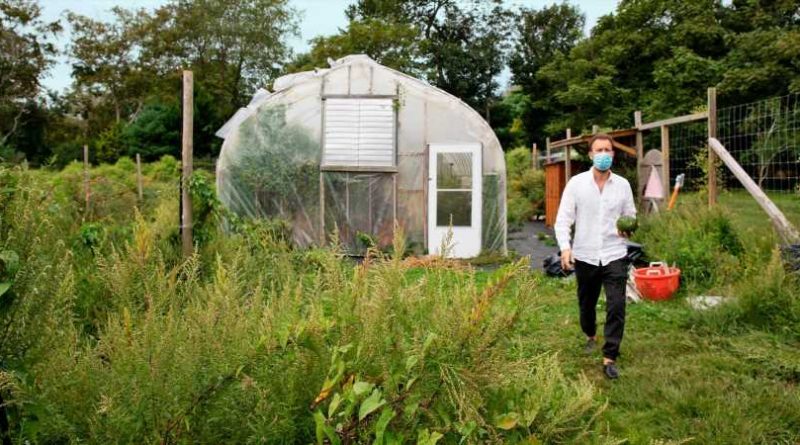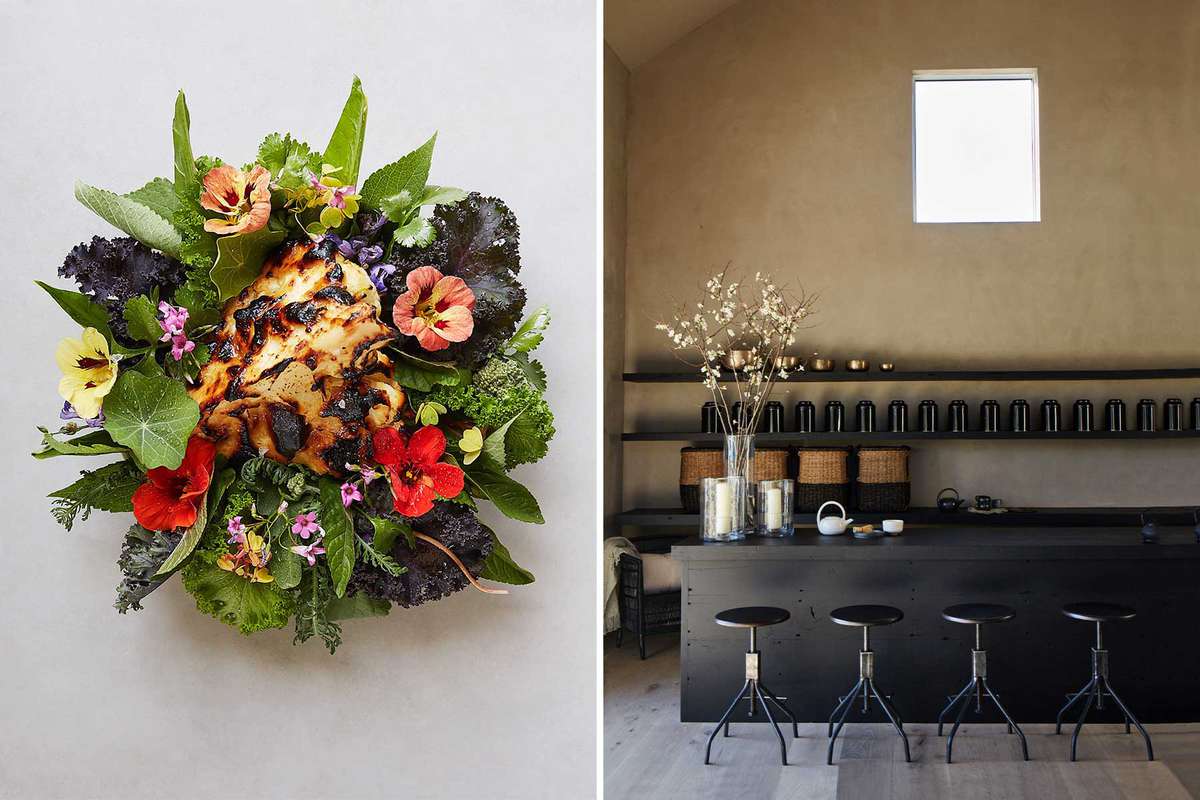This Food-focused Wellness Retreat Might Help You Rethink Your Idea of 'Healthy' Eating
Midway through a seven-course dinner at Shou Sugi Ban House last fall, I temporarily forgot that I was at a wellness retreat. The glass walls of the dining space were open to the cool Long Island night, my mask was in my lap, and I was slurping a chilled squash soup through a straw. The menu's theme that evening was seasonal squash: the soup vessel was a scooped-out gourd, and the straw was its naturally hollow stem, which I had seen chef Mads Refslund snip straight from the vine the day before. Squash, he explained, is an incredibly versatile ingredient — and one especially rich in free-radical-fighting carotenoids.
Before I arrived, I would have told you that an all-squash dinner at a health spa sounded like a special kind of hell. Can you blame me? In the eyes of the wellness industry, it seems food is meant to be optimized, not enjoyed. Wellness-branded edibles often take the form of gritty powders, bitter tinctures, or other spartan substances; when spas advertise their dining options, it's usually to highlight what's not included. (Read: gluten, dairy, an adequate number of calories.) But by the third course of Refslund's tour de squash — mellow pumpkin custard, tarts topped with pepita butter and zucchini carpaccio, and a whole roasted pattypan, as savory and juicy as a chicken thigh — I was ready to convert to gourd worship.
Copenhagen-born Refslund was one of the cofounders of Noma and is a pioneer of the ingredient-focused New Nordic movement. He oversees the culinary program at Shou Sugi Ban House, a high-design resort in Water Mill, New York, that opened in May 2019. While the chef spends much of his time in Brooklyn making plans for his upcoming restaurant in Greenpoint, he occasionally stays out east for a long weekend to lead small-group culinary retreats for SSBH guests.
During these gatherings, the subdued property — with its low-slung buildings and pathways lined with swaying seagrass — takes on a more exuberant tone. Guests emerge from their spa treatment rooms and minimalist, Zen-inspired suites to share a meal (while seated at tables six feet apart, at least in the age of social distancing). When we weren't sampling all varieties of squash, my six fellow guests and I prepared pickles together, helped with the harvest, and snacked on some of the finest produce Long Island has to offer.
We foraged for our lunch at the organic Bhumi Farms in nearby East Hampton, where former stock trader Frank Trentacoste now conducts experiments in mineral and micronutrient bioavailability. We downed bright, briny oysters from West Robins, a sustainable shellfish operation in Southampton, and listened to cofounder Will Peckham wax poetic about their selenium content and potential as a cheap source of protein. We learned how other cultures use drinks to promote well-being, and we eschewed cocktails (no alcohol here) in favor of a lesson on the health benefits of tea. Then, we found some waiting for us back in our suites: the showers had green-tea bath products from Kyoto-based brand Kotoshina, and each evening at turndown, we were given a sachet to brew in our massive bathtub for an herbal soak.
That's not to say that this was a weekend of pure consumption. I indulged in all the typical New Age trimmings, including sound therapy in the form of a gong-filled meditation session; an energy healing appointment, during which crystals were placed on my body, essential oils were diffused in the air, and tuning forks vibrated my bones; and daily pre-breakfast yoga. (There was also a good old-fashioned boot camp element, in the form of an ass-kicking outdoor workout with an appealingly brusque Romanian trainer.) But much of the retreat was dedicated to eating — and to better understanding the things we eat, where they come from, and how they make us feel.
Meals during a typical stay at SSBH, from what I understand, are on the lighter side. But over the course of this weekend, I grew more certain that being well is rarely achieved without eating well — and not always in pursuit of "health." Dish after dish was sensual and luxurious: nuts and dried fruits over house-made ricotta, duck eggs and wild garlic on dense Nordic rye, beet semifreddo with whipped goat cheese, supple trout cooked en papillote and swimming in a cream made from fermented chickpeas. Each day, eating felt restorative — and more than that, it felt like an offering to oneself.
Of course, the retreat is a singular, and pricy, experience; the meals were nutritionally precise and hyper-local, all prepared and exactingly plated by a world-famous auteur chef. But the lesson is one that you can take home. There are still too many voices telling us that eating should be a source of guilt. If we were to mute them and eat with more intention, care, and love, the world would be a healthier place indeed.
A version of this story appeared in the March 2021 issue of Travel + Leisure under the headline "The Pleasure Principle."
Source: Read Full Article





